Again, when starting with a post in English I start apologizing for my bad english. Today I want to talk of some personal experience I had , while playing with RFID.
Because of a project my company is involved in, I was asked to get a bit familiar with some RFID equipment. Not because of using it, just for have some soft skill to add. So I was given 3 RFID scanners, for HF, UHF and NFC. Then I started to play with it.
The bigger surprise was when I went home to do this in my "home office". Well, it was not a real surprise: you just see something you didn't expected. When I powered up everything and connected them to my laptop, I started to see some ID responding to me. I was in my "home office zone", so I was wondering what was having a RFID there, and... yes.
My dog. My dog has an RFID. It is chipped, then it has one. So I was curious, and since my cats are chipped too, I went to look for them. While cats are never where you expect them to be, a lot of other devices started to answer back to me. A dozen were coming from my wardrobe.
How many of you are actually removing all the RFIDs from their clothes, after buying? I would say, just ... not me. So that, in my wardrobe we had a shit load of things which answered back to my scanner.
I took one jacket I have, ad I was looking for it. I expected it to be a label, like
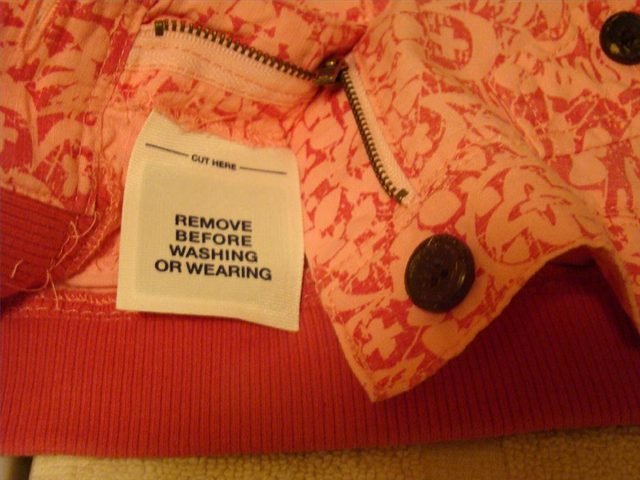
(credits to Monica Curran)
but I was wrong. Sure, I had a RFID like that in the Jacket, but it was dead. Possibly was because It was washed once. Still, this Jacket was talking to my scanner. So I entered the amazing planet of washable clothes RFID.
They look like that:
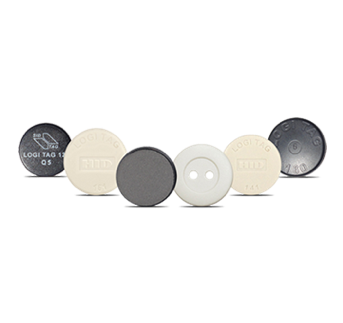
So this little sack with a "spare button" was actually the spy.
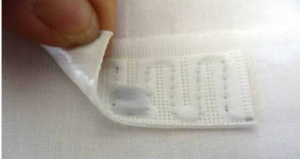

I went around home, and I find a surprising amount of elements having a RFID inside. My freezer had one. My dishwasher had one. Some of my furnitures had. Carpets had.
So I focused on myself. Being in Home Office I was in Pijama (which had a dead RFID, btw), so I dress and I tried to scan myself.
My ID card and my passport had a RFID. No surprise on that, we know it. My shoes had one. My other jacket had, and my backpack too. Since I don't wash my backpack that often, it was still alive and kicking.
Then, if you think a surveillance state looks like this:
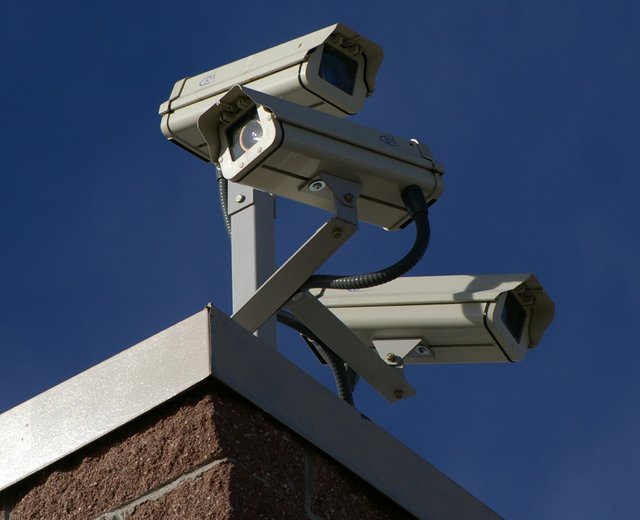
Then you got it wrong. This is visible. Everybody can see it. You can avoid it, if you are a trained and you know what you are searching for. The real surveillance device looks like that:
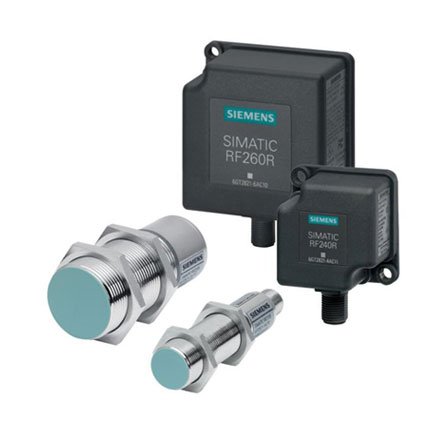
This one is an industrial version, so you need to ad some chassis if you need it to be an outdoor scanner.
First, range. As I studied a bit the issue, it has emerged the range is not that short as it seems:
- 125 kHz. and 134.3 kHz. Low Frequency (LF) Passive RFID Tags -read distance of 30 cm (1 foot) or less - usually 10 cm (4 inches) unless you are using a very large tag which can have a read distance of up to 2 meters when attached to metal. There are several different LF 134.2 tags which produce read distances of 1 - 2 meters in industrial environments. There are special readers that allow for a 1 - 2 meter read distance using standard size tags.
- 13.56 MHz. High Frequency (HF) Passive RFID Tags - maximum read distance of 1.5 meters (4 foot 11 inches) - usually under 1 meter (3 feet) and you can use a single or multi port reader plus custom antennas to extend the read range to longer tag read distances or a wider RFID read zone. To obtain more than 1 meter you need a reader with more than 1 watt RFID output power. There are some 13.56 readers with RF power outputs up to 10 watts for multiple antenna connections and over 1 meter tag read distances.
- 860 ~ 960 MHz. Ultra High Frequency (UHF) Passive RFID Tags - minimum read distance of over 1 meter or 3 feet. Gen2 tags can have a read range of up to 12 meters or 37 feet, however new generation of IC's plus antenna designs are now pushing this distance to over 15 meters! Gen 2 tags can be either 860 MHz. or 902 MHz. frequencies. Gen2 EPCglobal are multifrequency 860 ~ 960 MHz. Gen 2 Semi-active battery assisted tags are semi-passive (semi-active) tags have a read range of up to 50 meters or about 162 feet. Gen 2 Semi-active tags are just emerging on the market. Some "Windshield" tags out latest version read at over 12 meters (40 feet) when attached to the inside of a windhsield. You can get far longer read distances using fixed readers using Gen 2 US frequency 902~ 928 MHz.
- 860 ~ 960 MHz. 3rd and 4th Generation IC/Silicon - The new generation 3 and 4 (Monza4, Higgs3 and NXP G2XM) silicon (Integrated Circuit) is now available. This new silicon (IC) provides up to 40% more sensitivity while reducing RF interference. This means that a tag using this new generation of silicon can have a read range of over 16 meters or 50 feet under FCC regulations of 4 watts EIRP. There are many H3, Monza4 and NXP G2XM tags and has tested these tags at read distances of over 16 meters or 53 feet using 30 dBi power and a single antenna!
- RTLS - Real Time Location Systems - Usually LF and SHF - now you can have a UHF RTLS that is extremely accurate and can easily control 250,000 sq feet on a single switch.
- 433 MHz Ultra High Frequency Active RFID Tags - up to 500 meter read range (1,500 feet) A complete line of 433 MHz readers and tags that can be used for many industrial,healthcare, mining, and other tracking and locating applications is available in the market.
- 2.45 GHz. Super High Frequency Active RFID Tags - up to 100 meter read range (325 feet) There are several different modulations for 2.45 GHz. and you can also have real time location information from these active tags.
Seems there is no issue at all to track some RFID , until you choose the proper technology. This means, a surveillance agent just needs to cross you while walking. Not touching you, just crossing. You know, someone with you into the elevator, someone sit close to you into the restaurant. Once they have some ID of you , they could place the sensors in a place where they suspect (or want to have evidence) you have gone.
Even worst, they could enter your home and have a full catalog of your clothes ID. Once they have such a catalog, they only need sensors in order to know if you are in a given place or not.
Why this is worst than surveillance cameras in my opinion? Because they use a channel your body cannot.
I mean, if you want to protect yourself from a camera, you know how to disguise. You cover your head with a Guy Fawkes mask, you dress all in black , all the same, and you know now is very hard to identify you. You know because you can see it.
Now, imagine a channel you cannot see. By example, that your "Anonymous" Guy Fawkes mask has a RFID inside. They could also be flexible:

And... whoops. Your "Anonymous" mask is now tracking you! The very point is that you cannot see , neither the receiver neither the ID. They don't operate on a visible frequency, neither on an audible one. So they can be "hidden" to our senses: they see you, you can't see them.
It took to me a Weekend to clean my home to most of the RFIDs. I was only able to remove the "movable" ones, like the ones in the clothes. I didn't had the time to dismantle my freezer neither my dishwasher to understand where a RFID was. Of course I didn't remove the ones from my pets. Close to the wall, I can read my neighbor's ones. So I know when they are at bed, since my wall is behind their bedroom, and seems they have some RFID on the night dress, I suspect is their slippers, scuffs or something. Using the equipment I had, I rewrite the one in my ID Card, in a way it is only returning I am a Gucci Lilith Bag, (I used data from my wife's bag). I didn't erased one in my Passport because I don't want to have troubles when I travel. I wasn't able to remove it from my shoes, because it seemed embedded into the sole.
So If I was a government and I wanted to enable a full featured surveillance state, I did't use mobile phones or computers. It's bloody expensive. What you can do is to place RFID scanners everywhere. The RFID itself will be placed by supermarkets, vendors, producers, industries, so you won't pay for it.
You don't need to backdoor each and every device at your expense, when the industry is placing a RFID into almost everything. You only need to place the scanners, and you know who is where. Then you need to put them into ATMs , credit cards, ID cards and passports, in order to associate identity with clothes, and you are done. Just put a sensor in some crowded place in the city , and you scan everyone is walking there.
Plus a scanner is CHEAPER than a camera. A short range scanner with a GSM chip to send the data using SMS is ~10% of a camera , and will register enough data to associate you with your identity.
There is a way to avoid it? Well, given the fact my cheap shoes had a RFID, I would say, "go naked". Because almost everything you may dress, has one. And even when you think that you removed all of them, you still have some. I still see something pinging back at my home, and I cannot get what is that, most likely because my scanner cannot completely read it.
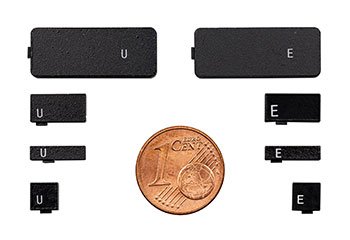
Until you don't use at least 3 scanners, there is a little chance you can get rid of them.
So, once yome government had "scanned" you in the streets, everything they need to proof you is you, is entering your home and find out the clothes you were dressing.
Your "Anonymous" Guy Fawkes mask is tracking you....
There is an open source investigation taking place discussing passports and ID cards that you might find interesting.
The Biometric ID Grid: A Country-by-Country Guide
https://www.corbettreport.com/the-biometric-id-grid-a-country-by-country-guide/comment-page-1/#comment-36071
Downvoting a post can decrease pending rewards and make it less visible. Common reasons:
Submit
Hi, thank you for the comment. I was not that focused in Id cards or passports... what surprised me was the long lifecycle of the other devices on clothes. Most of them even survived to washing.... yes, facial biometry is an issue, but you still a camera there... which is expensive. And you may easily deface yourself dressing a mask. To stop radio waves is quite harder...
Downvoting a post can decrease pending rewards and make it less visible. Common reasons:
Submit
Indeed.
Perhaps I can get your opinion on something. I came across this study while I was researching WiGig the other day, and then I saw this article. Are we there already? Are they using 60 GHz mmWave for tracking? I am a novice, so please excuse me if I am completely wrong here.
Have you investigated the uses of RFID for the Internet of Things?
Downvoting a post can decrease pending rewards and make it less visible. Common reasons:
Submit
Wow ! You can lean so much from steemit! Thanks for sharing. I don't wear masks only at carnivals :-)
Downvoting a post can decrease pending rewards and make it less visible. Common reasons:
Submit